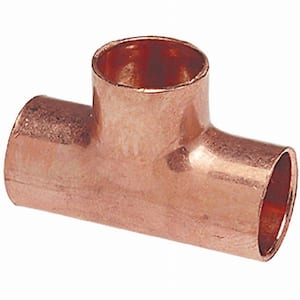Uncovering the Health Advantages of Using Copper Products in Everyday Life
Uncovering the Health Advantages of Using Copper Products in Everyday Life
Blog Article
How Copper Products Contribute to Sustainable Practices in Various Industries
In renewable energy systems, for instance, copper boosts the performance of solar and wind technologies, while its application in building decreases waste through longevity. As markets look for to take on even more sustainable practices, the duty of copper can show crucial in attaining ecological objectives.
Copper in Renewable Resource
Copper plays an essential function in the improvement of sustainable energy modern technologies, functioning as a crucial conductor in various applications. Its outstanding electric conductivity and resistance to rust make it a suitable product for electric wiring, which is necessary in solar panels, wind generators, and energy storage systems. In solar photovoltaic systems, copper is made use of in the affiliations and wiring, making it possible for reliable energy conversion from sunlight to electrical energy.
In wind power, copper is integral to the generators and transformers that convert kinetic energy into electrical energy, making sure ideal performance and reliability. The need for electrical cars (EVs) is increasing, with copper being a crucial element in batteries, motors, and billing facilities. The shift to EVs significantly boosts the demand for copper, as these lorries commonly use 4 times a lot more copper than traditional internal combustion engine lorries.
As the world looks for to reduce climate modification and transition to lasting energy resources, copper's function comes to be significantly essential. The material not just improves the efficiency and resilience of renewable resource systems however additionally supports the wider objective of lowering greenhouse gas discharges and promoting a sustainable future.
Eco-Friendly Building And Construction Products
Over the last few years, there has been a remarkable shift in the direction of the fostering of green building products in action to expanding ecological concerns. This adjustment is encouraged by the need for lasting options that minimize ecological impacts while preserving structural stability and visual charm.
Copper, recognized for its resilience and recyclability, has actually emerged as an essential gamer in this sector. It can be used in roofing, plumbing, and electric systems, contributing to power efficiency and decreasing waste. Copper's long life means fewer replacements in time, further improving its sustainability profile.
Additionally, materials such as bamboo, redeemed timber, and reused steel are obtaining appeal. These alternatives not only offer reduced environmental influence yet also advertise resource conservation. As developing codes significantly highlight sustainability, engineers and building contractors are integrating these materials into their jobs, promoting advancement in style.
The enhancing fostering of green building and construction products reflects a broader dedication to sustainability in the developed setting. By focusing on these products, the building and construction industry can significantly lower its carbon impact, straighten with regulative requirements, and support a much healthier community for future generations. This pattern marks an essential action towards a much more sustainable future in construction.
Copper's Duty in Medical care
Current researches have highlighted the considerable role of copper in medical care setups, specifically because of its antimicrobial properties. Copper surface areas have actually been shown to lower the visibility of microorganisms, consisting of viruses and bacteria, by up to 99.9% within a brief period. This impressive efficacy makes copper an indispensable material for high-touch surface areas in medical facilities, such as doorknobs, bed rails, and IV posts, consequently adding to improved infection control actions.
Along with its direct antimicrobial impacts, copper also contributes in the more comprehensive context of health center sustainability (Copper Products). By integrating copper into clinical tools and furnishings, healthcare facilities can minimize the incidence of healthcare-associated infections (HAIs), which not just improves patient outcomes yet also decreases the prices associated with extensive health center keeps and added therapies
Furthermore, copper's sturdiness and recyclability line up with sustainable practices, enabling accountable source administration. As health care systems significantly focus on both person safety and ecological stewardship, the assimilation of copper products is becoming much more prevalent. This twin advantage emphasizes copper's vital contribution to a healthier, much safer, and extra lasting health care atmosphere.
Sustainability in Transportation

In addition, copper's toughness and rust resistance add to the durability of transportation framework (Copper Products). In rail systems, for example, copper parts boost the dependability and performance of signaling and power systems, crucial for decreasing hold-ups and power consumption. Additionally, copper's function in sustainable power systems, such as solar and wind, supports sustainable transportation services by providing clean energy for electrical transportation options
Investments in copper technology not just foster sustainability but also stimulate economic development and job production in eco-friendly markets. As markets make every effort to fulfill stringent environmental guidelines, the application of copper items in transportation emerges as a critical technique in accomplishing sustainability goals and promoting a cleaner, extra reliable future.
Copper and Circular Economy
As my sources the globe significantly embraces sustainability, the function of copper in the circular economic climate ends up being ever before extra substantial. Copper's inherent residential or commercial properties-- such as its recyclability, conductivity, and durability-- placement it as a key product in a resource-efficient economic climate. The circular economic situation aims to minimize waste and maximize resource use through recycling and reusing products, and copper excels in this regard.
The steel can be recycled forever without loss of quality, making it a perfect candidate for lasting methods across different markets, including building and construction, electronic devices, and renewable resource. By recycling and recuperating copper from end-of-life products, markets can considerably lower the need for virgin products, consequently decreasing environmental effects connected with mining and processing.
Additionally, the assimilation of copper right into round economic situation frameworks not only saves resources yet also cultivates innovation. Companies that prioritize copper recycling add to a more lasting supply chain, boosting their competitiveness while lining up with regulative needs and customer choices for environmentally accountable products.
Verdict
In conclusion, copper products dramatically add to sustainable techniques across several see post fields. Their essential function in boosting renewable resource technologies, advertising eco-friendly building materials, sustaining infection control in health care, promoting lasting transportation, and personifying the principles of a circular economic climate highlights the convenience and value of copper. By integrating copper into different applications, industries can achieve higher efficiency, decrease ecological impact, and straighten with international sustainability objectives, inevitably promoting a more lasting future.

Copper's exceptional conductivity makes it a favored material in electric vehicle (EV) systems, enhancing energy effectiveness and performance. In addition, copper's role in renewable power systems, such as solar and wind, sustains sustainable transport solutions by providing tidy energy for electrical transportation choices.
Their vital function in boosting eco-friendly power innovations, advertising green construction materials, sustaining infection control in healthcare, promoting sustainable transport, and personifying the principles of a circular economic situation highlights the flexibility and value of copper.
Report this page